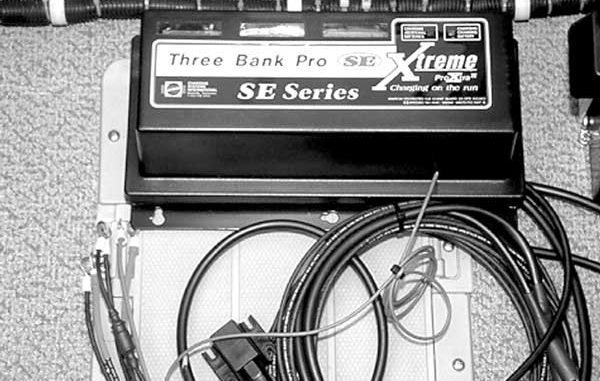
Lacassine Pool will open in late April, and anglers will rediscover a bass fishery that is very much like it used to be.
An obscure paragraph of Murphy’s Law says that no matter how many deep-cycle batteries you connect to a trolling motor or how much storage capacity each one has, Mother Nature can hit them with enough wind or current to send you back to the dock early. But recent developments in onboard battery charger technology are making this law difficult for Murphy to enforce.
Charging Systems International has added a new Xtreme series of chargers to its lineup that use either AC power or your boat engine’s charging system to replenish your trolling motor batteries.
Stealth Charging Systems offers an even more high-tech system to get the same job done. Each time you crank the engine, these systems wait until your engine recharges the cranking battery, and then they pass engine charging power on to your trolling motor batteries.
This is a big improvement over RV-type battery isolator systems that simply connect all the batteries together each time you turn the ignition on. These isolators only work with 12-volt trolling motor systems, and they can drag your cranking battery down to the level of nearly depleted trolling motor batteries, a level too low to crank your engine. The new systems never let your cranking battery get below a full charge while the engine is running.
The amount of charging power that these new systems put into trolling motor batteries depends upon the engine’s charging system output and the length of time that the engine runs as you cruise between fishing spots.
Obviously, a 50-amp charging system will put more juice back in the batteries than a 30-amp system, if both engines use the same design. Some engines have enough pumps and electronic bells and whistles to use half the charging system’s output just to keep them running.
Charging time is also a factor. If you go to one spot and run the trolling motor all day, an engine charging system won’t help you, but if you run as few as 10 minutes between fishing spots and change spots frequently it can make a world of difference.
These systems work by limiting your trolling motor batteries’ depth of discharge. Each time you stop running the trolling motor, your batteries equalize and a slight self-recharge occurs. If you only run your batteries down 10 or 20 percent at a fishing spot and then cruise long enough to put almost that much juice back into them before stopping to fish again, you could end the day with batteries that are almost fully charged.
Some professional tournament fishermen report using these systems for a whole season without needing to plug the charger into AC power at the end of each day.
These systems can also make your batteries last longer. The number of discharge/recharge cycles that a battery can survive depends upon the depth of each discharge. A battery that is designed to last for 300 cycles when discharged 60-80 percent may last for 600-800 cycles if it is only discharged 30 percent. And, it might last 1,000 cycles or more if it is only discharged 10 percent.
These engine charging systems can add years of extra life to your batteries because keeping the batteries at least partially charged while you cruise reduces the depth of discharge at each fishing stop.
Engine charging systems can also save money and weight. If your trolling motor is powered by 80-pound, group 31 batteries that are only discharged about 10 percent at each fishing spot, you can probably switch to 50-pound, group size 27 batteries that may be discharged 20 percent under the same conditions.
That could save 60 pounds if you have a typical 24-volt motor running two batteries and 90 pounds if you have a 36-volt motor powered by three batteries. The smaller, lighter batteries will last just about as long and cost less to replace.
Weight is one of the largest determinators of a boat’s top speed. Less weight means more speed or the same speed at a lower throttle setting, which can reduce fuel consumption, too.
If there is a down-side to these chargers, I haven’t discovered it yet.
For more information on the chargers discussed, contact Charging Systems International (800/742-2740; www.dualpro.com) or Stealth Charging Systems (888/588-4506; stealthcharging.com).


